What is an Ad Server & 10 Best Ad Servers for Publishers
The advertising ecosystem is complex and includes many parties, but an ad server is one of the most important. Why, you may ask?
Because the ad server is a fundamental component that decides which ads appear on which websites and when.
This article will explain what an ad server is, how it works, and what types of ad servers exist. Make sure to scroll until the end to find out 10 best publishers ad servers for different uses!
What is an Ad Server?
An ad server is a technology responsible for storing, managing, and serving ads on a publisher’s website based on targeting attributes.
Additionally, an ad server collects advertising data (such as impressions and clicks) to track the performance of ad campaigns.
Depending on the end-user, an ad server can be first-party (used by publishers) or third-party (used by advertisers).
The most advanced ad serving platforms are equipped with both first-party and third-party ad server functionality (e.g., Google Ad Manager, Xandr, Adform).
Later on, we are going to discuss the differences between these two ad servers.
How Does an Ad Server Work?
An ad server is powered by technology that inserts ads on websites. The core of any ad serving platform is an ad decision engine and ad planning engine.
Ad decision engine selects the best ad for display according to the rules and goals (such as targeting, pacing, ad format, ad placement, priority, etc.) defined by publishers and advertisers.
Ad planning engine distributes the ad impressions evenly during a selected time frame or as specified by AdOps.
Why Do Publishers Need an Ad Server?
Publishers need an ad server to run direct campaigns. However, ad servers can also be used for programmatic needs, such as connecting to multiple programmatic vendors and/or ad inventory tests.
In addition, having an ad server for publishers has the following features:
- sell ad inventory directly to advertisers;
- serve ads based on predefined conditions;
- advanced analytics and reporting;
- opportunity to test and compare different SSPs and monetization platforms like Setupad to maximize ad revenue;
- a wider choice of digital ad formats compared to programmatic, such as expandables, popups, popunders, etc.;
- ad optimization.
What is server-side ad serving?
Server-side ad serving is a technique used in digital advertising where the ad is processed and delivered from the server hosting the website or app, rather than directly from the user’s device. In other words, this allows publishers to display ads on their inventory without coded tags because the ad request doesn’t originate from the browser or app.
Server-side ads are often reserved for direct deals and server-to-server connections, including programmatic demand. This is also a great technique for brands who want to deliver an advertising experience utilizing ad formats that aren’t always available in traditional programmatic buying.
What is client-side ad serving?
In client-side ad serving, the ad and ad tag are delivered to the user’s device, and the device itself handles rendering and displaying the ad.
Client-side ad serving involves inserting ad code directly into the publisher’s website or app (such as a JavaScript tag), which is also a programmatic demand. When the winning ad is picked, it gets injected into the publisher’s site/app where the code is placed.
Ad Server vs Ad Network
An ad network compared to an ad server is not a technology but rather a company that combines a group of websites and apps. It connects them with advertisers who want to promote their products.
Ad networks use ad servers to display ads but the two are not the same.
The central idea of an ad network is to collect and categorize ad inventory from publishers and offer it to advertisers for a small commission.
The table below outlines key differences between an ad server and an ad network.
| Ad Server | Ad Network | |
| Type | Software/technology | Group of websites and apps |
| Selling method | Direct | Through an ad network |
| Purpose | To manage, serve, and track ad campaigns | To collect ad inventory from publishers and sell it to advertisers |
| Used by | Publishers, advertisers, ad networks, ad agencies, etc. | Advertisers and ad agencies (to buy ads); publishers (to join the ad network) |
| Value | Streamlines the process of selling, serving, and tracking direct, in-house, and programmatic ads in real-time across websites, mobile sites, and apps | Helps advertisers buy the best inventory across multiple publishers. May also re-sell premium ad inventory |
As mentioned, ad servers can be used by publishers (first-party ad servers) and advertisers (third-party ad servers).
Let’s look at each of them in turn.
1st Party Ad Server (Publisher Ad Serving)
First-party ad servers allow publishers to manage their ad slots and sell their ad inventory in one interface. They’re first and foremost used for managing direct campaigns.
Another reason you might want an ad server is to set up location and device targeting.
Another crucial aspect of ad servers, especially for platforms like Google Ad Manager, is the concept of key-value targeting. This allows publishers to serve ads based on specific attributes or conditions, offering the audience a more tailored ad experience.
However, if a first-party ad server has such technical capability, it may allow third-party partners (such as SSPs) to compete for the publisher’s ad inventory programmatically (e.g., Adform ad server).
For example, it is possible to set up a waterfall to organize ad inventory or connect to a header bidding wrapper to maximize competition for ad slots and increase fill rates.
A first-party ad server is also responsible for:
- media files storage for ad creatives (images, videos, etc.);
- the insertion of direct, in-house, and programmatic ads on the publisher’s website;
- ad optimization (including frequency capping, planning, and distribution of ad impressions);
- targeting;
- the selection of the most relevant ads for display;
- tracking and reporting;
- inventory forecasting (a process that checks how much ad inventory a publisher has available for the future to avoid overselling).
How does a first-party ad server work?
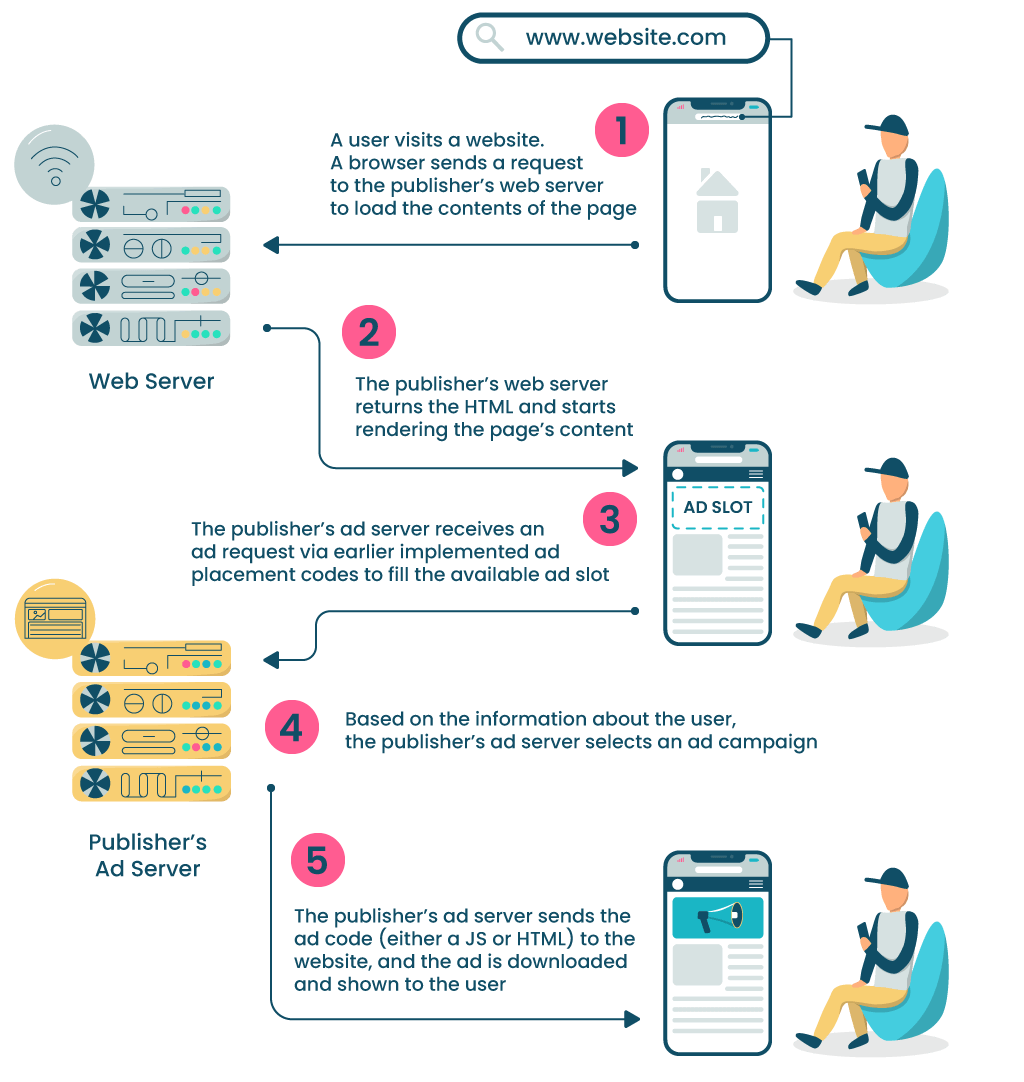
Is an SSP an ad server?
A supply-side platform (SSP) is a sell-side technology designed for publishers to offer their ad inventory to multiple DSPs, ad networks, and ad exchanges in real-time, making it available to more potential buyers.
With time, many first-party ad servers developed into SSPs that support header bidding technology, which allows publishers to offer their ad inventory to multiple demand partners simultaneously.
Thus, a first-party ad server advanced its technology to manage both direct and programmatic campaigns with multiple demand partners.
3rd Party Ad Server (Advertiser Ad Server)
A third-party ad server is used by advertisers to track, analyze, and optimize their ad campaigns and to check if the impressions were delivered. On the other hand, a first-party ad server is used by publishers to manage and organize their ad placements from one place.
| First-party (publisher-side) | Third-party (advertiser-side) | |
| Purpose | To serve ads appearing on the publisher’s website/app | To store and manage ad creatives across multiple publishers and ad networks |
| Used by | Publishers | Advertisers, ad agencies |
| Value | Allows monetizing ad inventory through direct or programmatic deals (if connected to adtech platforms) | Allows to optimize and track ad campaigns in real-time and effectively spend advertising budget |
The fact that publishers and advertisers use different ad servers leads to an ad discrepancy, which is an inconsistency in data between first-party and third-party ad servers.
For example, numerous redirects or a network connection latency may result in ad impressions recorded on the advertiser’s ad server and not on the publisher’s.
A third-party ad server is also responsible for:
- managing the media buying across many publishers and ad networks in one place;
- storing all information about the ad campaigns;
- running direct and programmatic campaigns;
- managing ad creatives;
- tracking ad campaign performance (e.g., impressions, clicks);
- setting up tracking parameters;
- allocating ad budget;
- running campaigns across multiple publishers using a wide range of ad formats.
How does a third-party ad server work?
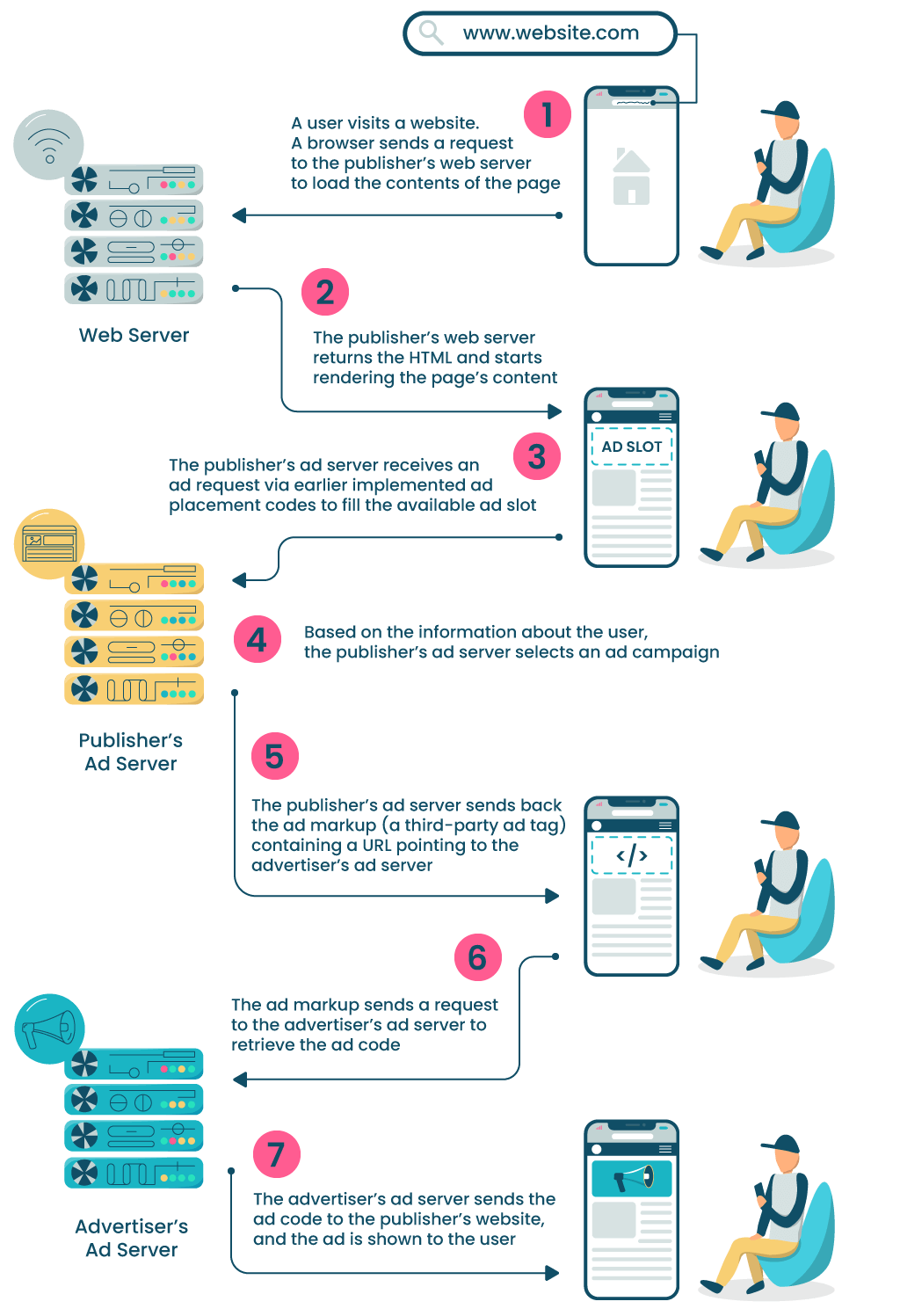
Ad server vs DSP
A demand-side platform (DSP) is a buy-side technology designed for advertisers to programmatically buy ad impressions across multiple publishers’ websites based on targeting parameters.
Most DSPs today are equipped with an ad server, but the two are not the same and serve a different purpose.
DSPs buy ad inventory in a programmatic way. They also streamline the media buying process for advertisers by:
- estimating the value of bids;
- setting up ad creatives;
- collecting and analyzing data from cookies and other user identifiers;
- decide which ad impressions to buy over the RTB protocol.
The confusion arises because many adtech companies (Xandr, Adform, Improve Digital, and more) today are full-stack platforms that combine SSP, DSP, and ad servers under the same roof.
The picture below outlines the relationship between the publisher’s and advertiser’s ad servers, and other adtech platforms.
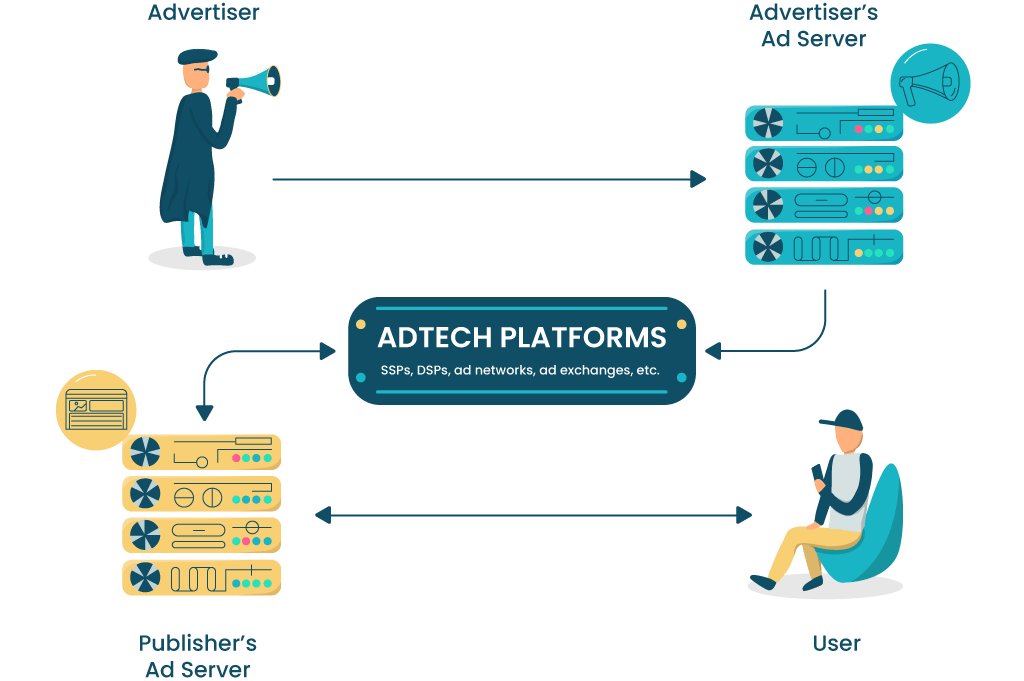
Now that we know the difference between first-party and third-party ad servers, let’s see how you can get started with them. There are generally two main routes–hosted ad server and self-hosted (open source) ad server.
A Hosted Ad Server
A hosted ad server is hosted by an ad server company and doesn’t require any special technical knowledge to use. Essentially, this is a SaaS technology that you “rent” by paying a yearly/monthly fee for access.
If you need an ad server for basic ad operations, a self-hosted ad server is probably the best solution as it provides all the necessary functionality.
However, since most hosted ad servers are JavaScript-based, they can potentially slow down your website.
Example of Hosted Ad Server: Equative
A Self-Hosted Ad Server (Open-Source Ad Server)
The main feature of a self-hosted ad server is that the technology is readily available for free or a small one-time fee. However, the maintenance and troubleshooting of this type of ad server fall on the shoulders of a publisher.
A self-hosted ad server is also not particularly customizable, and you also need your own server to host a script.
Example of Self-hosted Ad Server: Revive
Top Ad Servers for Publishers
All ad servers below support header bidding technology, and, therefore, can be used to optimize ads between direct and programmatic sources.
1. Best Ad Server Overall: Google Ad Manager (GAM)
Google Ad Manager (formerly DoubleClick for Publishers or DFP) is the most popular third-party ad server, which provides a respectable number of features and customization options, access to API, reports, historical data, and more.
The free (and most widely used) version of GAM is designed for small-medium publishers and allows up to 90-200 million monthly impressions (number depends on your location).
GAM offers a programmatic demand to Google AdSense and Google AdX, so it is the best choice for publishers looking to monetize their ad inventory programmatically.
But it is also an excellent ad server to manage direct campaigns and to use together with monetization platforms like Setupad.
Related article: The Ultimate Guide to Google Ad Manager 360 for Publishers
2. Best Ad Server for Maximing Ad Revenue: Setupad
Setupad’s in-house developed Prebid technology sits on top of our very own ad server. This unique advantage allows connecting to a limitless number of demand partners with a single server call. These server-to-server (S2S) connections provide a faster bid response and additional demand, generating extra revenue. But this also allows us to leverage Prebid browser-side (client-side) connections through a unified and efficient infrastructure.
We have developed an internal cloud-hosted ad server solution and a cloud-hosted bidding platform to reduce our reliance on third-party sources and maintain complete ownership of our core advertising technologies. It also provides our publishers with an unmatched level of control over their heading bidding processes and tools to optimize their monetization strategies.
This is also reflected in our long-term commitment that has led to the launch of Setupad Prebid Self-Serve, a fully automated platform that enables publishers at all levels to manage and optimize their ad sales process efficiently and entirely in-house, using a unified system.

3. Best Ad Server for Omnichannel Media: Adform
Adform is a full-fledged ad server with its own SSP, DSP, and DMP functionality. It offers a high-value rich media ad format support, analytics for more monetization opportunities, and tools to maximize the value of each ad impression.
A powerful feature that sets Adform apart from competitors is its cross-channel capabilities for selling specific media.
Overall, Adform is a powerful ad serving platform for publishers whose focus is on programmatic demand.
4. Best Vertically Integrated Ad Server: Equativ
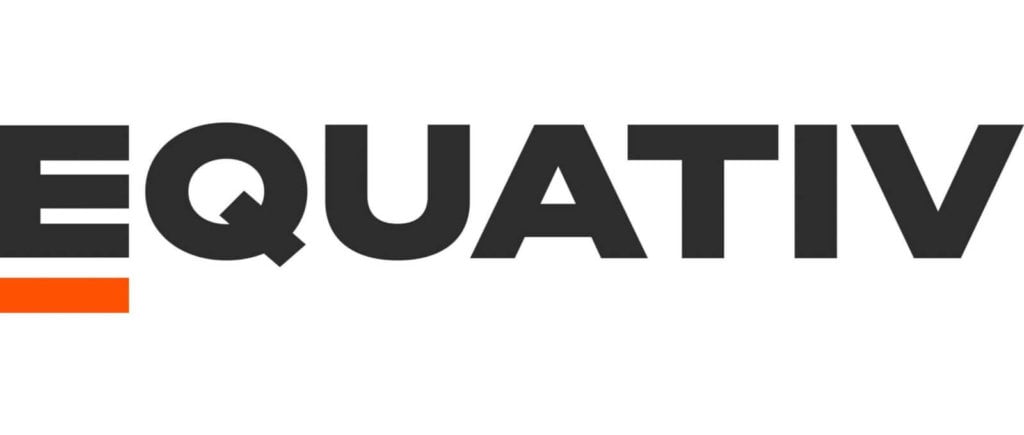
Equativ ad server, previously known as Smart, is a vertically integrated ad server with the added benefit of an SSP and a DSP, allowing publishers to reach premium buyers and increase competition on both direct and programmatic sources.
Equativ is also known for its real-time adjustments and fine-tuning of campaigns to ensure maximum revenue generation. Publishers can benefit from features like automated A/B testing, real-time analytics, and detailed reporting that inform better decision-making and campaign adjustment.
Equativ can be integrated with other SSPs and connected to the client-side or server-side header bidding wrapper. It offers many useful features, such as delivery planning, inventory forecasting, advanced targeting, and top-level security.
5. Best White-Label Ad Server: Epom

Epom ad server is a highly customized ad serving and management platform for cross-channel advertising. In fact, it provides over 800 customizable features, enabling publishers to tailor the platform to their specific needs. This flexibility is particularly valuable for publishers with unique requirements or those who wish to maintain a specific workflow or user experience.
It has a wide range of advanced programmatic-friendly ad formats, like video sliders, corner pop-ups, and overlays.
Perhaps the most exciting feature of Epom is its white-label functionality. Inside this ad server, you can personalize UI, match publishers & advertisers, and manage permissions for your clients’ accounts, making it an ideal choice for ad networks as well as publishers.
6. Best Ad Server for Customization: Kevel
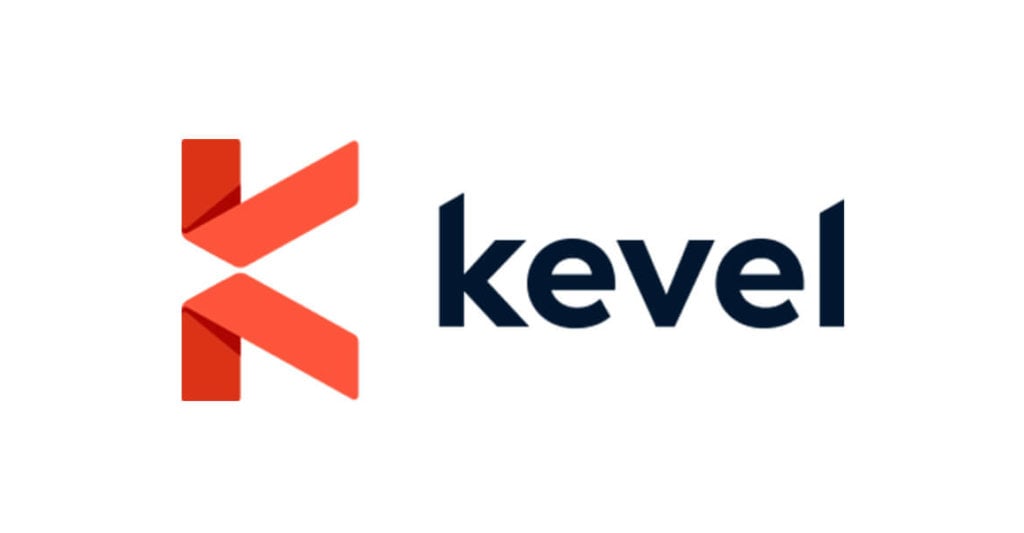
Kevel is considered among the top ad servers for publishers primarily due to its high degree of customization and flexibility. It is best suited for medium to large publishers or those with specific needs that require a bespoke solution. It offers powerful tools for those who can utilize its full range of features but might be less appropriate for those seeking a simple, out-of-the-box solution.
Kevel allows publishers to build a completely custom ad server using its APIs. This is particularly valuable for publishers with specific needs or those who want to integrate unique features that aren’t available in standard ad servers. The platform’s API-first approach enables seamless integration with existing systems, which is great for tech-savvy publishers or those with development resources who want to maintain a cohesive ecosystem.
However, with that comes a steep learning curve. A certain level of programming knowledge is necessary to fully utilize Kevel’s capabilities. This can be a barrier for publishers without technical staff or dedicated AdOps teams.
7. Best Ad Server for Large Publishers: OpenX
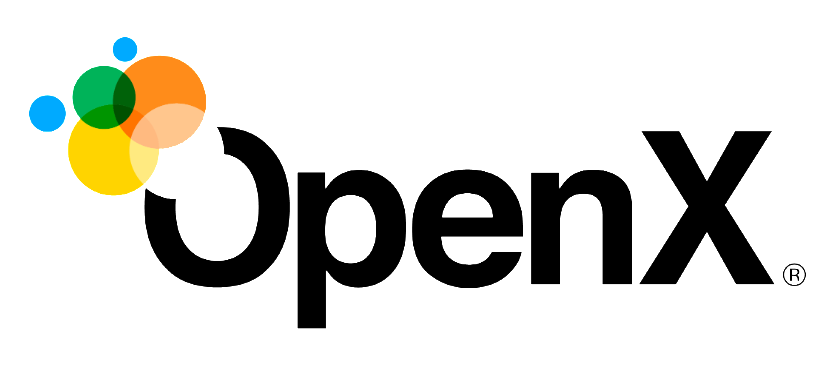
OpenX is among the top ad servers for publishers due to its robust features and strong track record in the industry. OpenX provides sophisticated targeting options that allow publishers to reach specific audiences with great precision. This enhances the effectiveness of ad campaigns and can lead to higher revenue.
Among the pros of this ad server is 12-months historical data, high-quality ad demand, and in-depth analytics and customized reports.
However, the sophisticated features and premium services offered by OpenX come at a higher price, which may not be feasible for smaller publishers or those just starting out. Given its range of features and data access, OpenX might demand more in terms of computational resources or integration effort, which again could be a drawback for smaller publishers.
8. Best Open-Source Ad Server: Revive
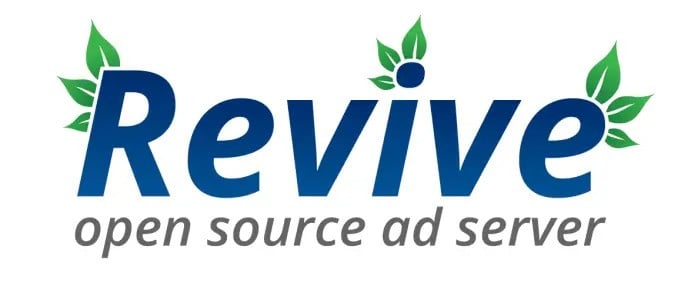
Revive is probably the most well-known open-source (free) self-hosted ad server for publishers. Revive ad server is best suited for publishers who need a cost-effective, customizable solution and have the technical capability to manage and modify an open-source platform. It offers a good balance between cost and flexibility but might demand more in terms of time and technical resource investment compared to fully managed commercial ad servers.
It is highly accessible for small to medium-sized publishers. Besides, there is a community of developers and users who contribute to its development, troubleshooting, and documentation.
But again, to fully benefit from a platform like this, you need to have a good level of technical skill. Many users have reported limited reporting options and lack of APIs, making it difficult to integrate with other systems like billing, CRM, etc. Some users have also expressed dissatisfaction with the UI.
9. Best Ad Server for Niche Publishers: Broadstreet
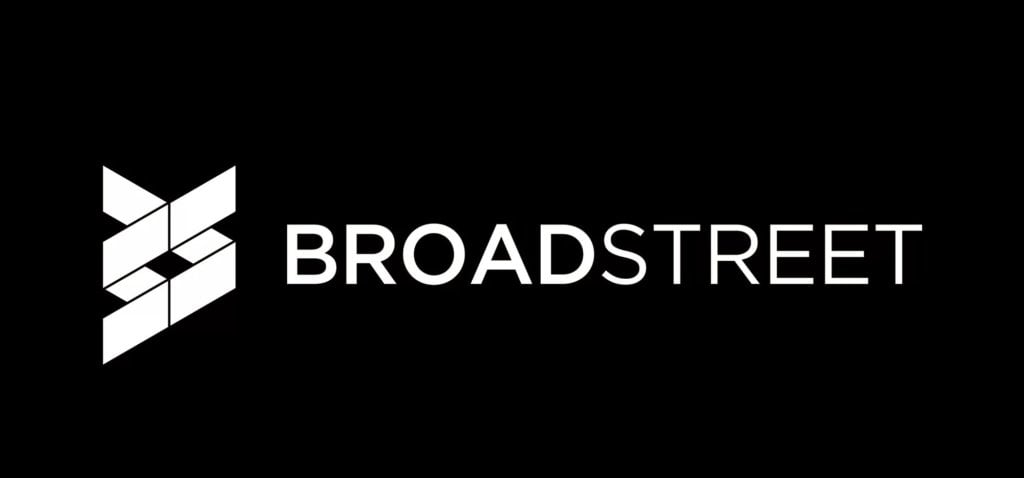
Broadstreet was initially tailored to local news sites, magazines, and niche market publishers. But today this ad server is well-regarded for its simplicity and excellent customer service, as well as tools for niche publishers, such as management of ads within newsletters and performance of tracking of sponsored content.
It is known for its user-friendly interface, which is beneficial for publishers without extensive technical knowledge. This ease of use extends to managing ads in newsletters and integrating with WordPress, making it ideal for smaller publishers. It offers a white labeling option, allowing publishers to brand the platform as their own.
However, it is not great for very large publishers with more complex ad serving needs. And compared to larger ad servers like GAM, Broadstreet lacks some advanced features in areas like real-time bidding and cross-platform ad management.
10. Best Scalable Ad Server: AdButler

AdButler is another great publisher choice thanks to its robust features, scalability, and excellent customer support. AdButler supports multiple ad formats, including display, video, mobile, and email. It also offers extensive customization options, including the ability to white-label the service.
What sets AdButler apart is its scalability. Whether you’re a small blog or a large media outlet, AdButler can scale to meet your needs. It handles high volumes of traffic effectively.
Despite, potential users should consider the initial setup complexity and cost factors in their decision-making process. The pricing may be on the higher side compared to other ad servers, and may increase significantly with the scale of use.
Can I Serve Ads Without An Ad Server?
The short answer is yes, but only if a publisher doesn’t have direct campaigns. This is achieved by installing a code directly onto the publisher’s site, which sends calls to programmatic partners.
But what if you want to display ads only in specific countries, say, England? In this case, you would need to obtain the support of an ad server to set location targeting.
However, if you are a Setupad client, there is no need for that.
Why?
Because we use our own ad server and have the capability to set targeting parameters such as devices and countries. By doing this, our clients’ banners load faster, and no impressions are lost in an exchange between the publisher’s and the partner’s ad servers (usually, this number is around 5-8%).
The Bottom Line
Having an ad server depends on every publisher’s needs and goals. Ultimately, the main question you need to answer is how important direct campaigns are to you.
If direct campaigns aren’t the primary source of your ad revenue, you may even opt out of ad server altogether. Instead, work with Setupad and benefit from the most up-to-date and complete stack of programmatic monetization technologies. In this case, there are no additional resources and costs.
If direct campaigns are important, then you need to choose the right ad server that can be efficiently integrated with programmatic technologies (Prebid Adapter).


